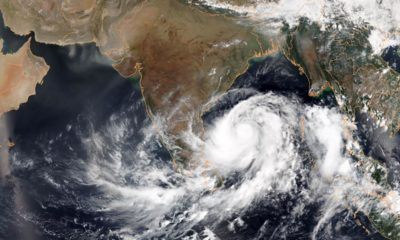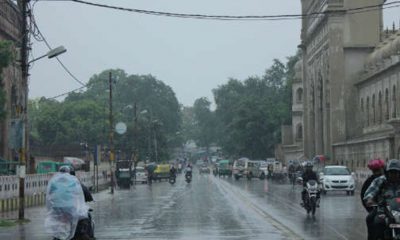World
Weather around Java Sea violent

Kuala Lumpur: Weather conditions around the area of the Java Sea, where AirAsia flight QZ8501 en route from Indonesia to Singapore dissapeared Sunday, are known to be violent but no t unmanageable, Malaysian aviation experts said.
t unmanageable, Malaysian aviation experts said.
The pilot of flight QZ8501 had asked the air traffic control to deviate its path becuase of rough weather before it went missing, The Star reported Monday.
A retired Malaysian pilot said thunderstorms in the region could be quite intense and that pilots could ask for a change in their flight plans.
“During this time of the year, the weather can be very violent there. The intensity is quite big and also the area of the thunderstorm is widespread. The storm could affect the airways, which is why the pilot asked for a deviation,” he said.
The plane disappeared at 7.24 a.m.(local time). Departing from Surabaya at 6.35 a.m., it was supposed to land in Singapore at 8.30 a.m.
A Meteorological Department spokesman confirmed that the Java Sea region had been experiencing thunderstorms and rain since 6.00 a.m.
Another aviation expert said the QZ8501 pilot had made the right call to deviate from the actual flight path.
Referring to presence of more than one factors involved in the flight’s disappearance, he cited example of , which crashed in 2009 killing all 228 on board after its equipment gave nonsensical readings due to obstruction from ice that formed while flying through a storm.
He said bad weather alone could not account for QZ8501’s disappearance, adding that more than one factors were usually present.
World
Lockdowns in China Force Urban Communities to Defy Censorship and Vent Frustration Online

Shanghai’s rich middle class is leading a wave of online dissent over the strict and prolonged lockdowns imposed in various parts of the country. Chinese internet censorship is struggling as patience is wearing thin in many urban centers, coming up with creative forms of online protests.
Social Media Posts Revealing Lockdown Tension in Shanghai
Drawn-out lockdowns are nothing new in China as authorities insist with the nation’s zero-Covid policy since the start of the pandemic. Currently over This time around, however, metropolitan areas like Shanghai are increasingly difficult to keep quiet, given that its more than 25 million residents have seen weeks of total isolation along with food shortages and many other service interruptions.
Dozens of towns and reportedly over 300 million Chinese citizens have been affected by lockdowns of different severity. As expected, urban netizens have been most outspoken over their difficulties by finding creative ways to get around state censorship and bans placed on topics, news comments and spontaneous campaigns.
Shanghai residents have been using mobile proxies and hijacking seemingly unrelated hashtags to talk about healthcare issues, delivery failures and the overall severity of their situation. The “positive energy” that the Chinese government wants to transmit during the recent prolonged series of lockdowns does not come naturally to those counting food supplies and online censors are working hard to filter words, trending topics and undesired social media sharing.
WeChat groups and message threads are under constant monitoring. Posts questioning the zero-Covid approach have been quickly deleted, including by leading Chinese health experts like Dr. Zhong Nanshan. Video footage is soon censored and protests and investigations are quickly made to disappear.
Where this has not worked, officials have exposed banners with warnings and outright threats like “watch your own mouth or face punishment”, while drones have been patrolling the city skies. Yet, if anything, this has led to further tensions and unspoken confrontation with Shanghai’s educated and affluent middle class.
Creative Online Solutions Harnessing Civic Energy
Announcements by Chinese social media that they would be publishing the IP addresses of users who “spread rumors” have not helped either. Tech industry research has shown that much of Asia’s tech-savvy population has a habit of using mobile proxies and other privacy tools, quickly finding workarounds to browse the internet freely and talk to the world about the hottest topics.
The sheer volume of forbidden posts is already a challenge for the very censorship system, experts explain. Unable to track all trending hashtags, state workers overlook topics that speak about the US, Ukraine or other popular news. Linking human rights elsewhere to their situation, Chinese online dissidents establish their informal channels and “hijack” the conversation to share personal or publicly relevant information about the Covid suppression in their town.
Sarcastic and satirical posts still dominate. Others hope to evade the censors by replacing words from famous poems or the national anthem. One thing is certain – social media, when harnessed with the right creativity, has proven its ability to mount pressure on the government in even some of the most strictly controlled tech environments like China.





















